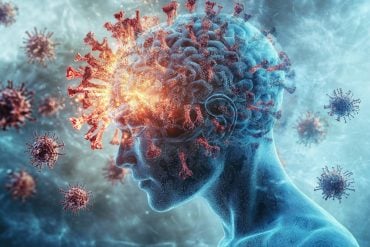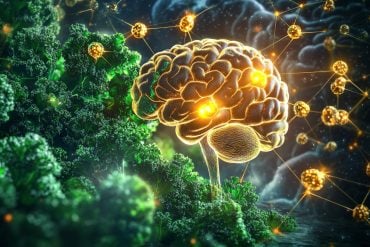Summary: A new paper reports on how understanding brain function has become more than a brain science.
Source: Frontiers.
How understanding brain function has become more than brain science.
The most complex piece of matter in the known universe is the brain. Neuroscientists have recently taken on the challenge to understand brain function from its intricate anatomy and structure. There is no sure way to go about it, and Dr. Javier DeFelipe at the Cajal Institute in Madrid proposed a solution, in his Frontiers in Neuroanatomy Grand Challenge article “The anatomical problem posed by brain complexity and size: a potential solution.”
Today, one year after the Challenge was published, DeFelipe and colleagues published a discussion around the actual size of the problem and possible solutions, in the new article “Comments and general discussion on ‘The anatomical problem posed by brain complexity and size: a potential solution’.”
“Rather than attempting to fully reconstruct the whole brain or a particular brain region, the solution seems to lie in realistic computational modelling of the brain,” says DeFelipe. This approach has inspired scientists all over the globe to contribute to large multidisciplinary projects, known as big data projects. The challenge is grand because it goes straight into and beyond the matter of Is there one best way to study brain function?
Designing an approach that tackles brain complexity has challenged scientists to rethink some of the most fundamental aspects of their work and to innovate. “Realist brain models based on biological data obtained in the lab can speed our understanding of brain function, because we expect it to require much less than timely experiments in living tissue,” says DeFelipe, “But as a neuroanatomist, I believe — as do many of my colleagues — that there is a lot of confusion about the anatomy of the brain and that there are frequent misunderstandings and wrong assumptions about many aspects of the brain organization or the use of experimental animals,” he explains.
By uniting many contributors in the discussion, the article resulted in a constructive and thoughtful dialogue from different views on the study of the human brain. “My idea was to present this problem to other neuroscientists and general readers in a simple manner and, try to provide a solution,” he says.

The study of the human brain is challenging, not only because of its complexity and technical difficulties, but also because of ethical limitations. “For obvious reasons, we are not always ethically allowed to collect all the necessary types of data directly from human brains. So, there is a big debate about the range of specific strategies that we should use.” The discussion also touches whether big worldwide projects, like the Human Brain Project based in Europe and the Brain Activity Map based in the United States, are a new and better paradigm to go forward, he says, or “if it is better to just follow the most common and traditional scheme of supporting relatively small groups of researchers.”
This discussion comes at an important moment for neuroscience, with potential impact on the hundred millions of funding devoted to the development of extraordinary technology inspired by biology. “The results of such large efforts can be a true paradigm shift”, says DeFelipe, whose main focus is the study of cortical circuit organization and function, and the history of how we came to our current understanding.
The outlook is inspiring. “By taking on such a grand challenge, this type of work involving hundreds of scientists, will generate results beyond our daily pursuits in the lab”, says DeFelipe.
Source: Michelle Ponto – Frontiers
Image Source: This NeuroscienceNews.com image is in the public domain.
Original Research: Full open access research for “The Anatomical Problem Posed by Brain Complexity and Size: A Potential Solution” by Javier DeFelipe, Rodney J. Douglas, Sean L. Hill, Ed S. Lein, Kevan A. C. Martin, Kathleen S. Rockland, Idan Segev, Gordon M. Shepherd and Gábor Tamás in Frontiers in Neuroanatomy. Published online June 10 2016 doi:10.3389/fnana.2016.00060
[cbtabs][cbtab title=”MLA”]Frontiers. “Next Steps in Understanding Brain Function.” NeuroscienceNews. NeuroscienceNews, 26 August 2016.
<https://neurosciencenews.com/neuroscience-brain-function-4914/>.[/cbtab][cbtab title=”APA”]Frontiers. (2016, August 26). Next Steps in Understanding Brain Function. NeuroscienceNews. Retrieved August 26, 2016 from https://neurosciencenews.com/neuroscience-brain-function-4914/[/cbtab][cbtab title=”Chicago”]Frontiers. “Next Steps in Understanding Brain Function.” https://neurosciencenews.com/neuroscience-brain-function-4914/ (accessed August 26, 2016).[/cbtab][/cbtabs]
Abstract
The Anatomical Problem Posed by Brain Complexity and Size: A Potential Solution
This article gathers together different opinions on the current status and future directions of the study of the brain, taking as a working document the article “The anatomical problem posed by brain complexity and size: a potential solution”. These commentaries are followed by a section dedicated to a general discussion of the issues raised, in which all contributors participate. The authors who have contributed to this article are listed in alphabetical order. As the reader will see, there are different points of view and of course there are many other aspects that would need further discussion that have been raised by other scientists who did not participate directly. For example, Peter Somogyi made the following comment (personal communication):
[“Anatomy” is a discipline and not a biological entity that exists in nature. Hence the brain or its cells do not have anatomy; we study them with anatomical methods (usually using microscopes) while we carry out “anatomical analysis.” The brain, its nuclei, cells, and their parts are the biological entities which several disciplines study, preferably together, providing a unified description and explanation of them. We must be clear about this, and avoid terms like “anatomical properties,” “physiological properties,” or “biochemical properties” as if these somehow existed in isolation. The separate disciplines, which developed historically due to the limitation of individual human brain capacity and short life span leading to methodological and conceptual specialization, are based on sets of methods, but study the same indivisible biological entity. E.g., the synaptic current recorded by electrophysiological methods flows through the membrane that we see in the electron microscope or with the help of antibodies to synaptic ion channels in the light microscope. Accordingly, the “anatomical problem” exists because of inadequate scientific rigor in addition to methodological limitations that are often not understood, not because of “brain complexity”.]
This is just an example of the many possible different points of view when dealing with the subject of the anatomy of the brain. Thus, this article is not intended to be comprehensive, and the unavoidable limitations in the selection of comments, data, and their interpretation reflect, in many cases, the personal views and interests of the authors.
“The Anatomical Problem Posed by Brain Complexity and Size: A Potential Solution” by Javier DeFelipe, Rodney J. Douglas, Sean L. Hill, Ed S. Lein, Kevan A. C. Martin, Kathleen S. Rockland, Idan Segev, Gordon M. Shepherd and Gábor Tamás in Frontiers in Neuroanatomy. Published online June 10 2016 doi:10.3389/fnana.2016.00060






